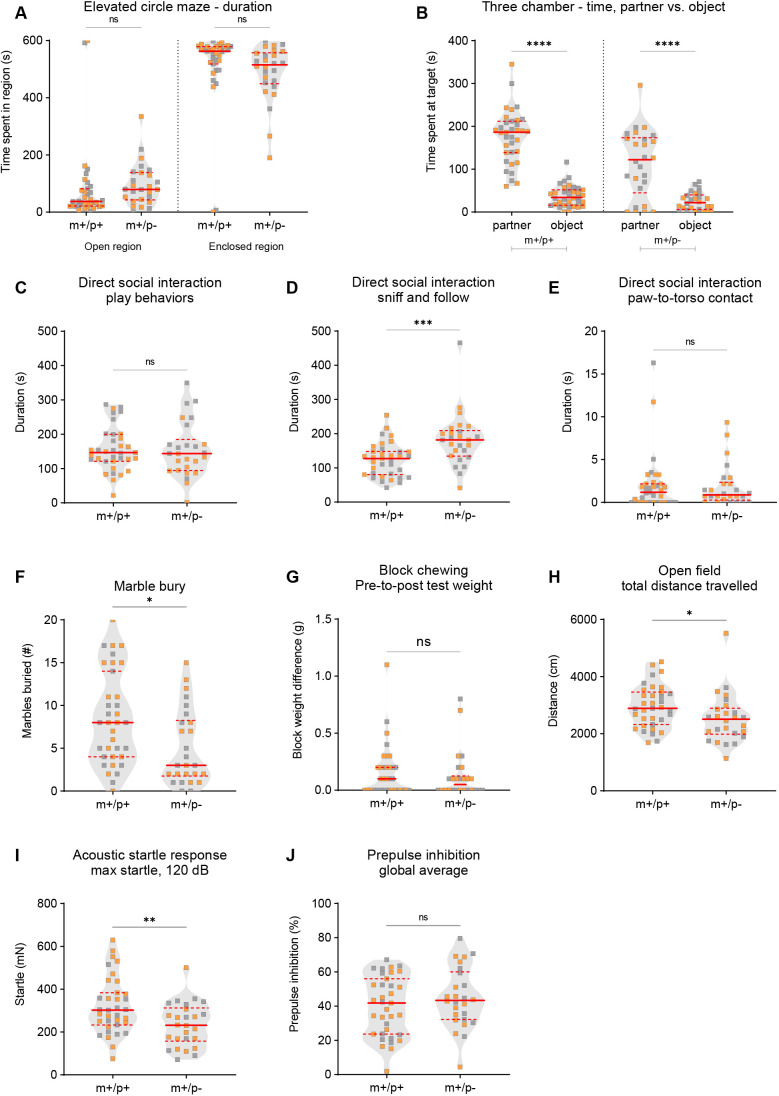Fig. 2.
Magel2m+/p− rats display select alterations in dyadic social interaction, perseverative-like behavior, locomotor activity and startle response. (A) Magel2m+/p− rats (m+/p−) compared to wild-type littermates (m+/p+) spent a comparable amount of time in the open and enclosed regions of the elevated circle maze. (B) Magel2m+/p− rats and wild-type littermates spent a statistically significant amount of time investigating conspecific partners in comparison to the novel object in the three-chamber test for social approach. (C-E) In a test of juvenile dyadic social interaction, Magel2m+/p− rats, in comparison to wild-type littermates, showed a comparable amount of time engaged in play-like behavior (C), a statistically significant increase in the duration of sniffing and following conspecific partners (D), and a comparable time spent in general paw-to-torso contact (E). (F,G) In tests of perseverative-like behavior, Magel2m+/p− rats buried fewer marbles (F); no differences were observed in the block-chew test (G). (H) Magel2m+/p− rats showed a significant decrease in total distance traveled. (I,J) Acoustic startle response at 120 dB in Magel2m+/p− rats was significantly reduced (I); prepulse inhibition of the startle response was normal (J). Violin plots were used to indicate data density and distribution, with gray (males) and orange (females) squares within each genotype/group category; solid red lines indicate the median and dashed red lines indicate quartiles. *P<0.05; **P<0.01; ***P<0.001; ****P<0.0001; ns, not significant; mutant rats relative to wild-type littermate controls; repeated measures (RM) ANOVA or multivariate two-way ANOVA using genotype and sex as main effects followed by post-hoc analyses were conducted when appropriate. A statistical summary of behavioral data is provided in Table S1.

